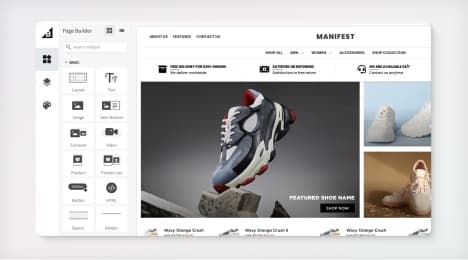
Watch Our Product Tour
See how BigCommerce helps you build and manage your online store with ease.
- Ecommerce Insights

6 Key Steps to Launch Your Online Store
Explore our Launch Foundations series to get your BigCommerce store up and running quickly.
BigCommerce helps growing businesses, enterprise brands, and everything in-between sell more online.
What is fair use, and why is it important?
Imagine that there is a striking image that perfectly encapsulates your brand. Unfortunately, the image is copyrighted. What portion of the image can you use without incurring a legal liability? The answer falls within the rules of fair use.
What is fair use?
Fair use is a doctrine of U.S. copyright law. It outlines the legal boundaries of utilizing copyrighted material without the copyright holder's permission.
The fair use doctrine has been codified and refined over many decades of legal precedent. As such, it is not a hard and fast set of rules (1). Whether a work is considered fair use is determined solely by the courts. If a copyright holder believes your application of their material is not fair use, he or she is within right to bring suit. The courts will decide if the purpose qualifies under the fair use doctrine - an often long and expensive process for everyone involved.
The broad categories that fall under fair use are:
parody
commentary and critique
news reporting
teaching
scholarship
research
Below are a few examples of proper fair use:
a film reviewer intersperses clips of a movie throughout a YouTube film review
a teacher copies a single chapter from a book and gives it to her students
a researcher quotes passages from another article to support a claim
a musician takes the melody of a popular song and records new lyrics
Section 107 of the US copyright code describes four factors for determining whether a work is fair use or not (2). They are:
The purpose and character of the use, including whether such use is of commercial nature or is for nonprofit educational purposes
The nature of the copyrighted work
The amount and substantiality of the portion used in relation to the copyrighted work as a whole
The effect of the use upon the potential market for, or value of, the copyrighted work
There is no pre-determined percentage of an image, or number of words, or number of musical notes that activates copyright law. Nor does acknowledging the holder of the copyright in your derivative work absolve you from the obligation to seek the holder's permission.
In the vast majority of cases, works used in the furtherance of a commercial enterprise (e.g. advertisements or ecommerce website design elements) do not qualify as fair use. There are, however, instances where a company's products could be construed as falling within the fair use doctrine. For example, if your company sells t-shirts emblazoned with the face of a celebrity that has been altered for humorous purposes, that purpose might be fair use.
Seek the advice of a lawyer before profiting from any treatment of copyrighted material. Ideally, businesses wishing to utilize copyrighted material always gain permission from the copyright holder first. An ethical business either finds the copyright holder and pays them for their work, or hires an artist who can create something new.
BigCommerce helps growing businesses, enterprise brands, and everything in-between sell more online.
Start growing your ecommerce business even faster.
High-volume or established business? Request a demo